Uzbekistan Flag Meaning
Three horizontal stripes of blue, white, and green separated by thin red stripes, with a white crescent moon and twelve white stars on the blue stripe, representing the sky and water, peace and purity, nature and fertility, the life force, the rebirth of Uzbekistan, and the twelve months of the year.
- Continent
- Asia
- Adopted
- 1991
- Ratio
- 1:2
- Colors
- blue, white, green, red
- Designer
- Unknown
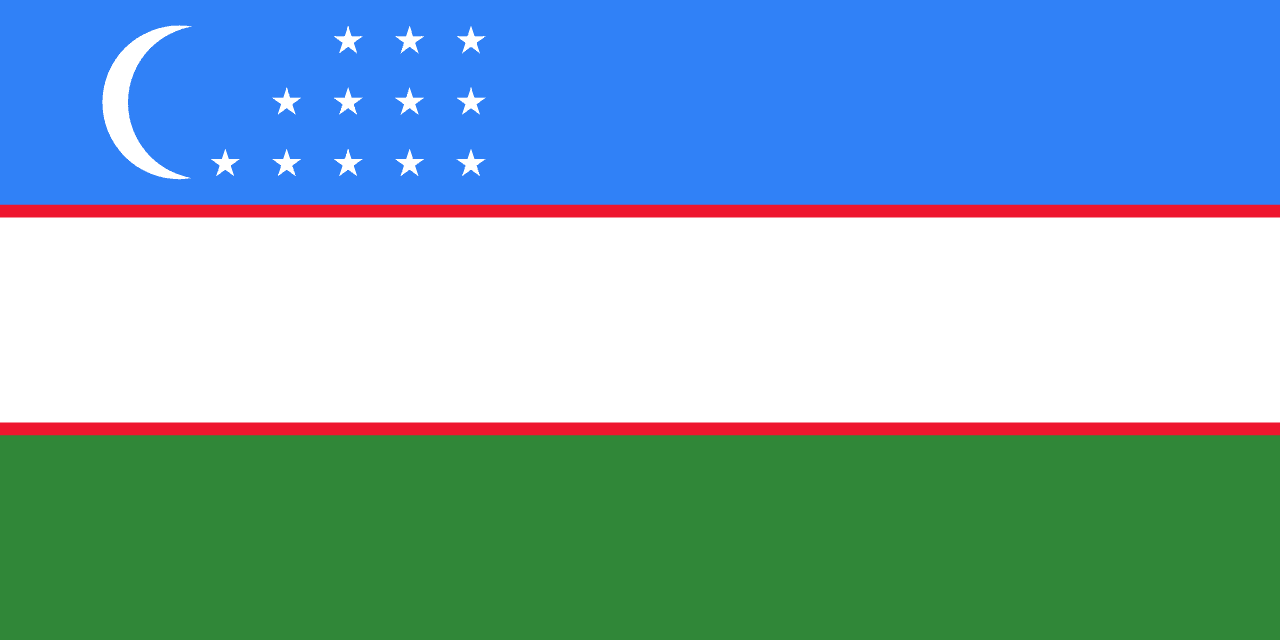
Symbolism
Blue Stripe: Represents the eternal sky and water, symbolizing the life-giving elements that sustain Uzbekistan's oasis civilization and the limitless possibilities of the independent nation.
White Stripes: Represent peace, purity, and the good intentions of the Uzbek people, symbolizing the desire for harmony among all ethnic groups and the peaceful nature of Uzbek society.
Green Stripe: Represents nature, fertility, and the renewal of life, symbolizing the oases and fertile valleys that have sustained civilization in Central Asia for thousands of years.
Red Stripes: Represent the life force flowing through all living beings, symbolizing the vitality and energy of the Uzbek people and their determination to build a prosperous nation.
Crescent Moon: Represents the rebirth of Uzbekistan as an independent nation and the Islamic faith of the majority population, symbolizing the new beginning after Soviet rule.
Twelve Stars: Represent the twelve months of the Islamic calendar and the zodiacal calendar, symbolizing the cyclical nature of time and the ancient astronomical knowledge of Central Asian civilizations.
History
- Ancient-Medieval Era: The region was home to ancient civilizations including Sogdiana and Bactria, later becoming central to the Silk Road trade routes that connected East and West for over 1,000 years.
- 8th-10th Century: Arab conquest brought Islam to the region, while Persian cultural influence remained strong, creating the synthesis of Islamic, Persian, and Turkic cultures that defines Uzbek identity.
- 1370-1507: The Timurid Empire under Tamerlane (Timur) and his successors made Samarkand one of the world's greatest cities, fostering a golden age of Islamic art, architecture, and scholarship.
- 16th-19th Century: The Uzbek khanates of Bukhara, Khiva, and Kokand dominated Central Asia, controlling trade routes and developing distinctive Islamic cultures while facing increasing Russian pressure.
- 1865-1920: Russian conquest gradually brought the region under Tsarist control, introducing railways and modern administration while disrupting traditional societies and trade patterns.
- 1920-1924: The Bolsheviks established Soviet control after defeating local resistance movements, including the Basmachi rebellion that fought for independence from Russian/Soviet rule.
- 1924-1991: The Uzbek Soviet Socialist Republic was created as part of Stalin's national delimitation policy, bringing modernization, education, and industrialization while suppressing Islamic and traditional culture.
- August 31, 1991: Uzbekistan declared independence from the collapsing Soviet Union under President Islam Karimov, adopting the current flag and beginning the transition to independence.
- 1991-2016: Islam Karimov's authoritarian rule brought stability but limited economic reform and severe human rights restrictions, while cotton production remained central to the economy.
- 2016-Present: President Shavkat Mirziyoyev has implemented significant economic and social reforms, improving relations with neighbors and beginning to open the country to foreign investment and tourism.
Trivia
- Uzbekistan is the only doubly landlocked country in Central Asia, requiring passage through at least two countries to reach any ocean, making regional cooperation crucial for trade.
- The flag represents a country that contains some of the world's greatest Islamic architectural treasures, including the mosques and madrasas of Samarkand, Bukhara, and Khiva.
- Uzbekistan is the world's fifth-largest cotton producer, though this has come at great environmental cost to the Aral Sea, once the world's fourth-largest lake.
- The country is home to the ancient Silk Road cities of Samarkand and Bukhara, UNESCO World Heritage sites that showcase the region's role as a crossroads of civilizations.
- Uzbek is the official language and belongs to the Turkic language family, though Russian remains widely spoken, and the country has switched from Cyrillic to Latin script since independence.
- The flag flies over a country with significant natural gas and gold reserves, making it one of the world's top gold producers and an important energy exporter in Central Asia.
- Traditional Uzbek culture includes distinctive arts like ikat silk weaving, ceramics, wood carving, and miniature painting that reflect Persian, Islamic, and Central Asian influences.
- Uzbekistan has the largest population in Central Asia with about 35 million people, making it a regional power despite its authoritarian governance and economic challenges.
- The country experiences extreme continental climate with hot, dry summers and cold winters, requiring sophisticated irrigation systems that have been used for over 2,000 years.
- Traditional Uzbek cuisine features dishes like plov (pilaf), manti (steamed dumplings), and shashlik (kebabs), reflecting the nomadic and sedentary traditions of Central Asia.
- The flag represents a country where about 90% of the population is Muslim (mostly Sunni), though Soviet legacy has created a largely secular society with moderate Islamic practice.
- Uzbekistan has been working to diversify its economy beyond cotton and gold, promoting manufacturing, technology, and tourism while implementing market-oriented reforms.
- Traditional music includes classical mugham and folk songs accompanied by instruments like the dutar, rubab, and doira drums, preserving Central Asian musical heritage.
- The country faces significant environmental challenges, particularly the drying of the Aral Sea due to cotton irrigation, creating what many consider one of the world's worst environmental disasters.
- Despite its authoritarian past, Uzbekistan has been gradually opening to the world, simplifying visa procedures, improving infrastructure, and encouraging foreign investment and cultural exchange.
Related Countries
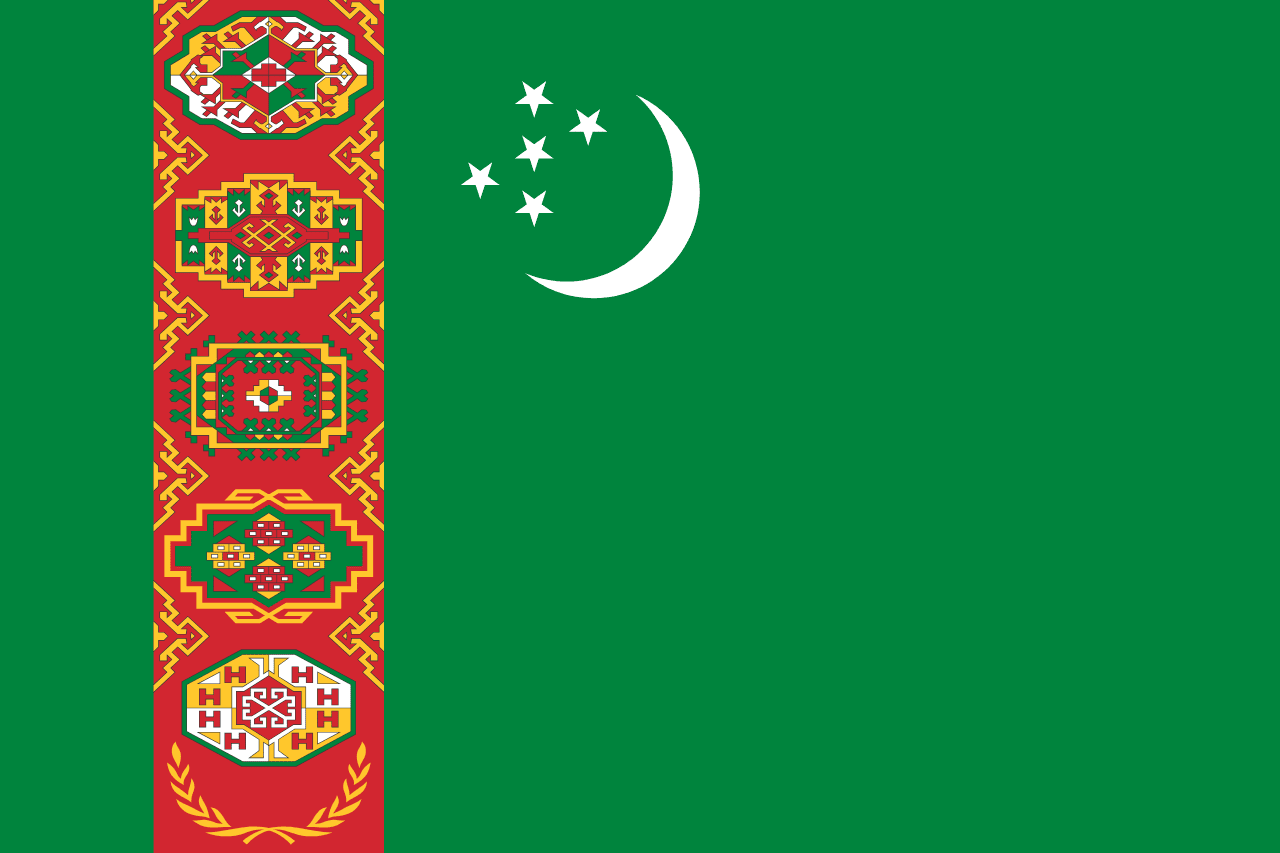
Turkmenistan
Asia
A green field with a vertical red stripe containing five traditional carpet guls (patterns) on the hoist side, and a white crescent moon with five stars in the upper left, representing Islam, the traditional carpet weaving culture, neutrality, and the five regions and senses of Turkmenistan.
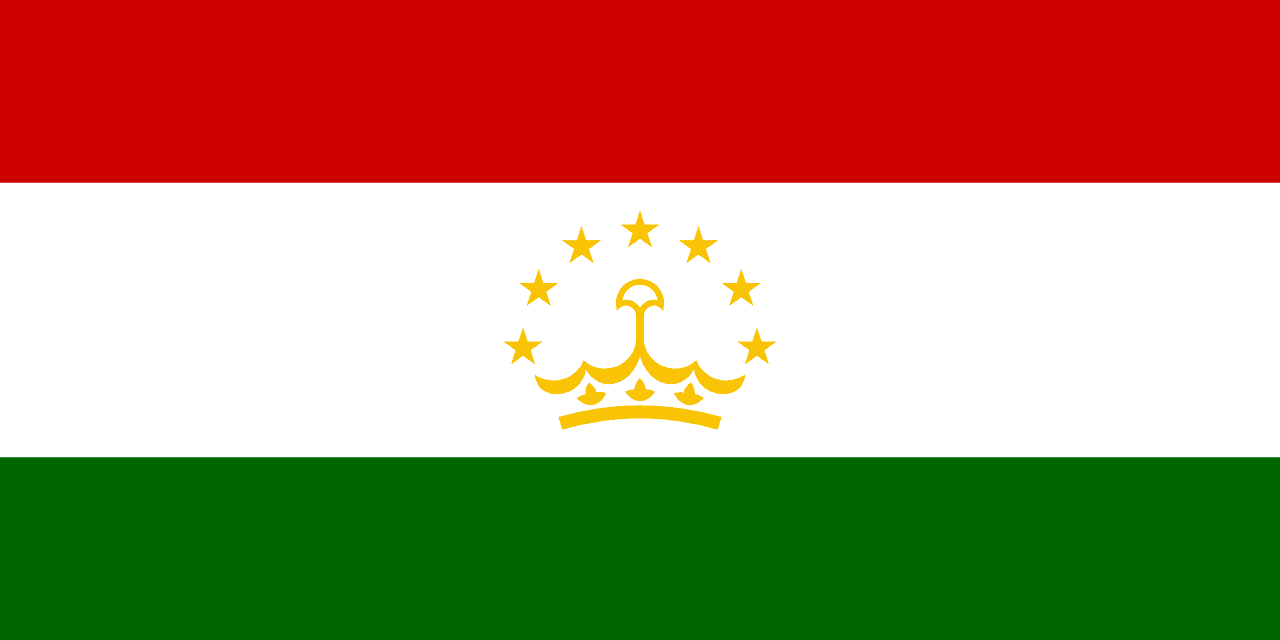
Tajikistan
Asia
Three horizontal stripes of red, white, and green with a golden crown topped by seven stars in the center of the white stripe, representing the unity of workers and peasants, cotton and snow-capped mountains, the verdant valleys, and the Somoni crown symbolizing Tajik sovereignty and the seven regions of historical Tajikistan.
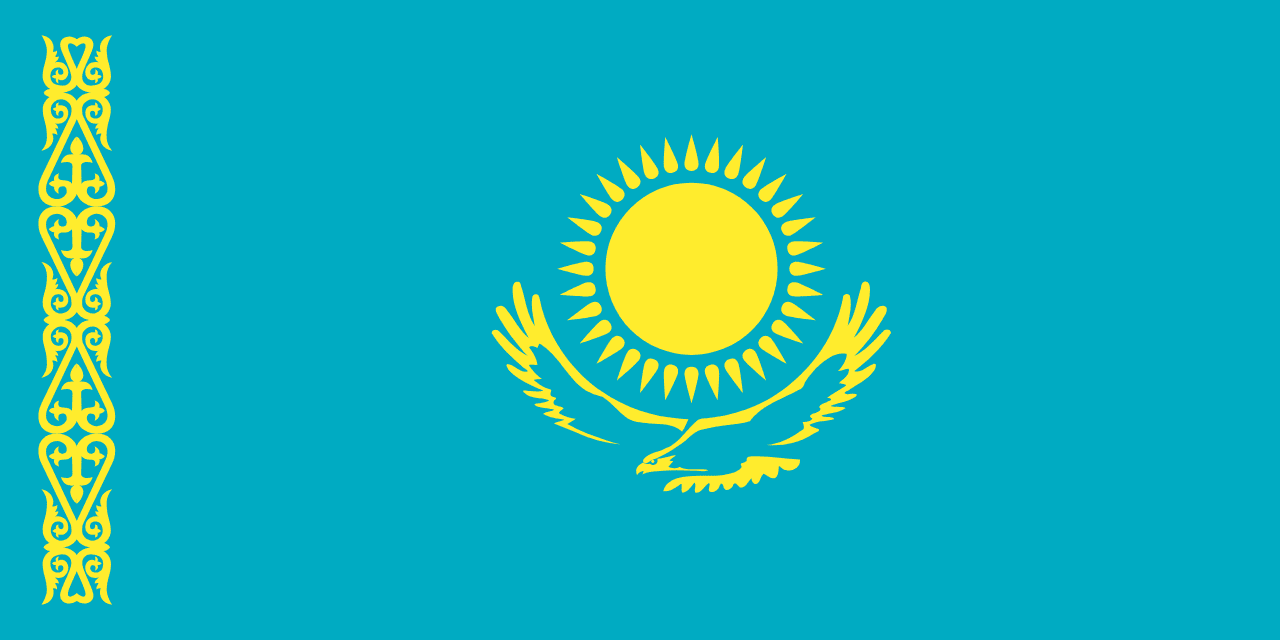
Kazakhstan
Asia
A turquoise field with a golden sun and soaring eagle in the center, and a traditional ornamental pattern on the hoist side, representing the eternal blue sky, freedom, and the rich nomadic heritage of the world's largest landlocked country.
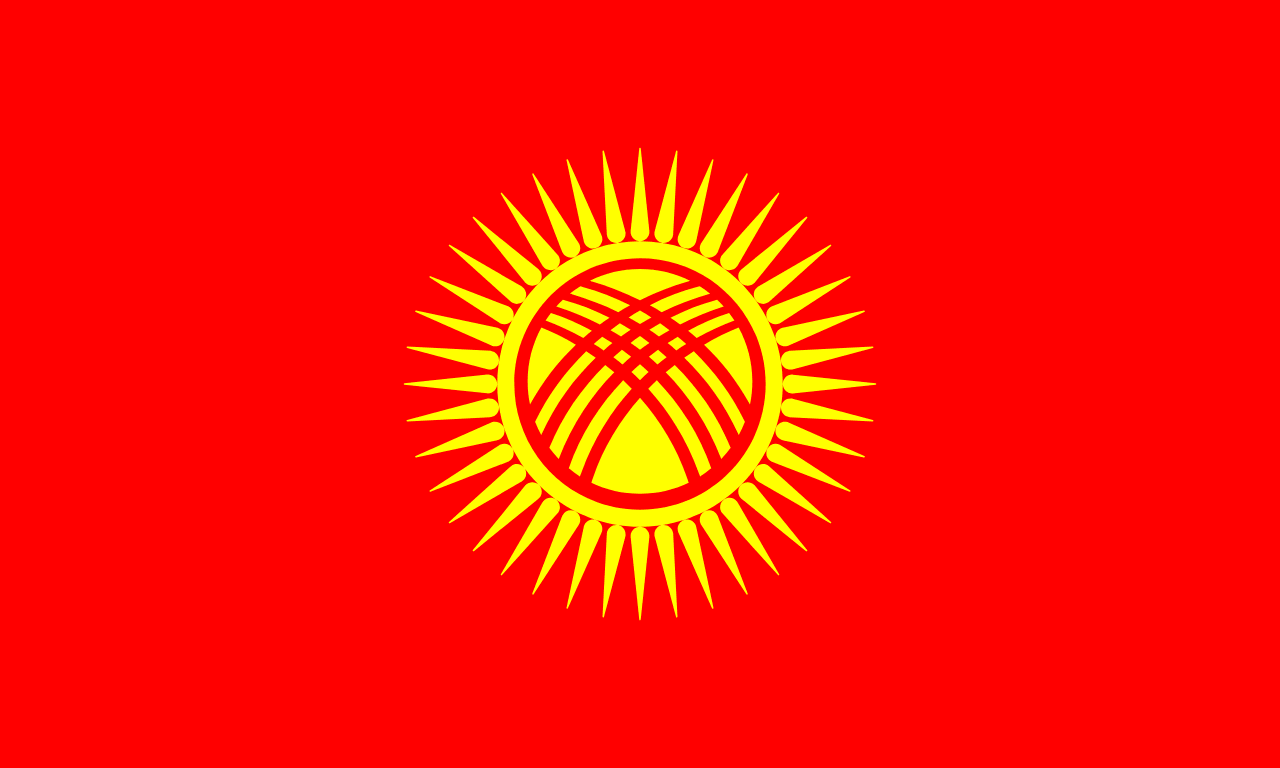
Kyrgyzstan
Asia
A red field with a yellow sun featuring 40 rays and a tunduk (yurt crown) in the center, representing the nomadic heritage, unity of 40 tribes, and the traditional dwelling of the Kyrgyz people in this mountainous Central Asian nation.

Afghanistan
Asia
Few nations have worn their history so visibly upon their flags as Afghanistan. In just over a century, the country has cycled through more banners than any other modern state, each design mirroring the upheavals of power, ideology, and identity that have defined its story. The current flag, a stark white field bearing the Shahada in bold black script, was restored by the Taliban in 2021. To outsiders, its simplicity may appear severe, even austere. Yet within its minimal form lie deep layers of meaning: an assertion of faith, a claim to authority, and a conscious rejection of the ornate tricolors and emblems that preceded it. To understand this flag is to glimpse not only Afghanistan’s turbulent politics, but also the powerful role of religion, symbolism, and history in shaping its national identity.
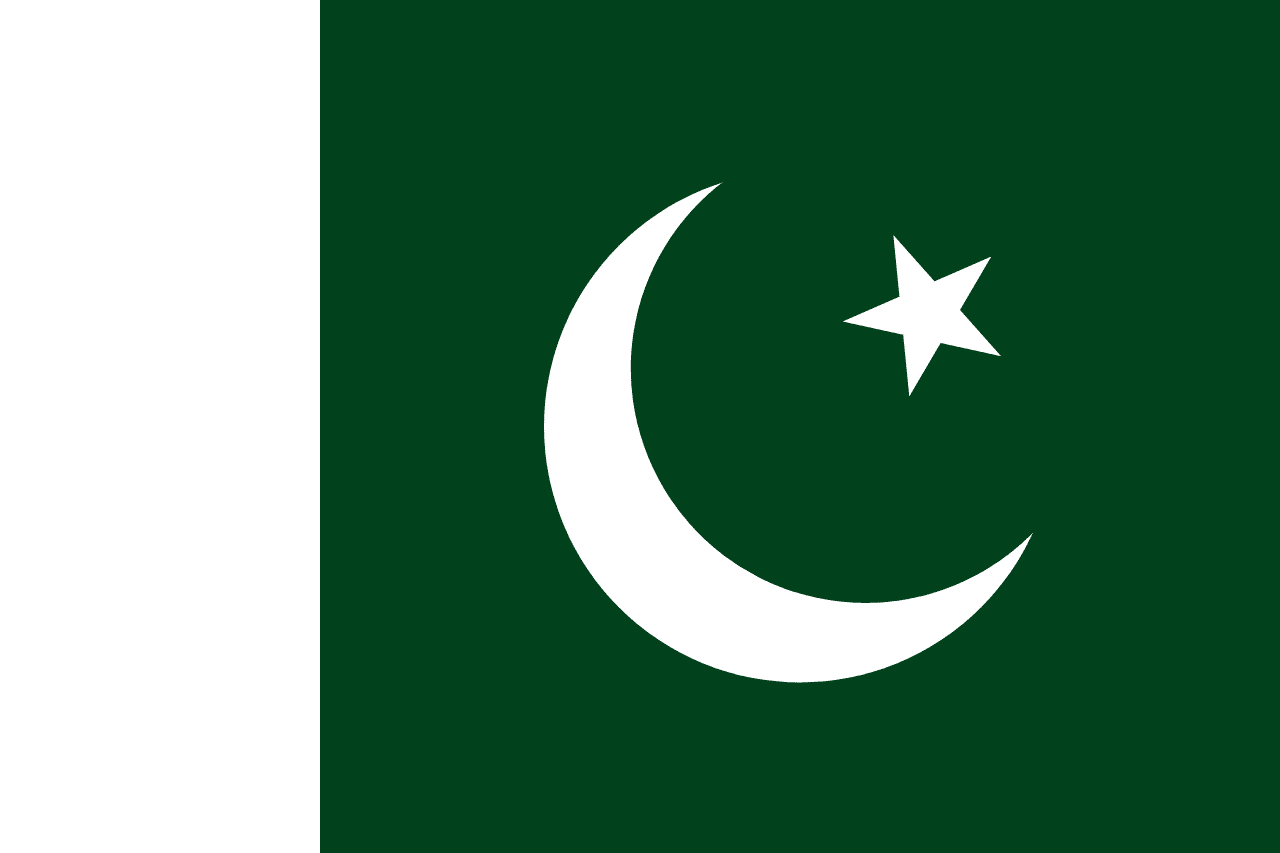
Pakistan
Asia
A green field with a white vertical stripe at the hoist, a white crescent, and a five-pointed star. The flag symbolizes Islam, religious minorities, and the guiding ideals of the nation.